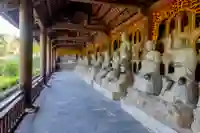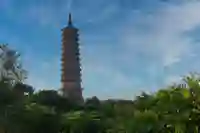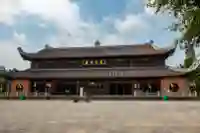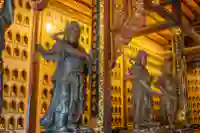

Image Missing
ninh binh
Getting to know...
The Bai Đính Temple Complex covers an area of 700 hectares and is located in the Ba Rau hills, near the Hoàng Long River. While there is an old temple on site, the majority of the buildings are quite new - being constructed between 1990 & 2010. It is a pilgrimage for many buddhist’s in Vietnam. It really is a spectacular sight & is a pilgrimage for many buddhist’s in Vietnam and surrounding countries. At 700 hectares, you could spend all day here and still still not see everything. Thankfully there are some electric carts that can take you around so you can see the different parts more easily.
The temples architecture adheres to traditional Vietnamese design aesthetics with its curve finials and corner eaves soaring outward and upward, resembling a phoenix’s tail. Artisanal works from local handicraft villages were selected for the interior, with bronze sculptures from Ý Yên, stone carvings from Ninh Van, wood carpentry from Phú Lộc, and embroidery from Ninh Hải.
Walking around the complex you will also see some very polished knees of statues. This is because people rub them for good luck and over the years, a fine polish appeared! The site is also active with many buddhist’s in active worship there.
The Old Temple
The original Bái Đính temple built many centuries ago is located in the foothills some 800 meters from the new developments. Ascending a series of over 300 stone steps, the path passes under an ornamental gate to reach the entrance. The temple is quite small by comparison, but has been lovingly restored to its original glory for all to enjoy.
Bảo Tháp Pagoda


Image Missing


Image Missing
With a height of 100m, the pagoda is the tallest in Vietnam. You can visit inside the pagoda and there is a lift to take you to the top. The views of the complex from the top are quite stunning and is where the feature photo for our main page of Ninh Binh tours was taken.
Tam Thế Hall


Image Missing


Image Missing
The largest structure within the complex (by volume), the Tam Thế Hall, is 34m high by 59m in length. The temple adheres to traditional Vietnamese design aesthetics with its curve finials and corner eaves soaring outward and upward, resembling a phoenix’s tail. Artisanal works from local handicraft villages were selected for the interior, with bronze sculptures from Ý Yên, stone carvings from Ninh Van, wood carpentry from Phú Lộc, and embroidery from Ninh Hải.